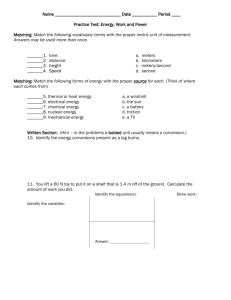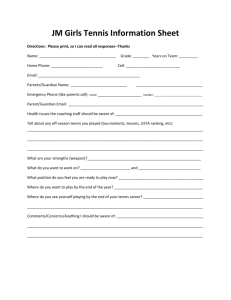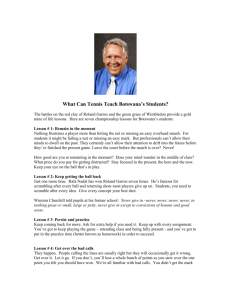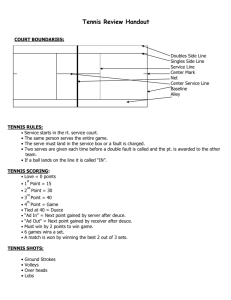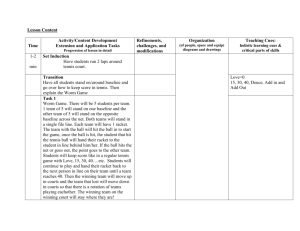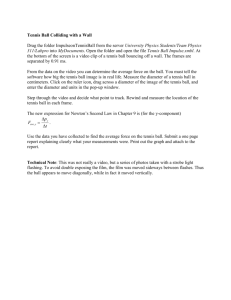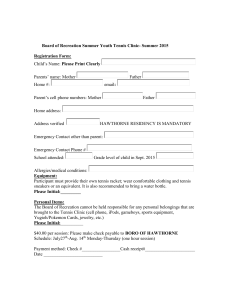Muscle Fatigue Lab
advertisement
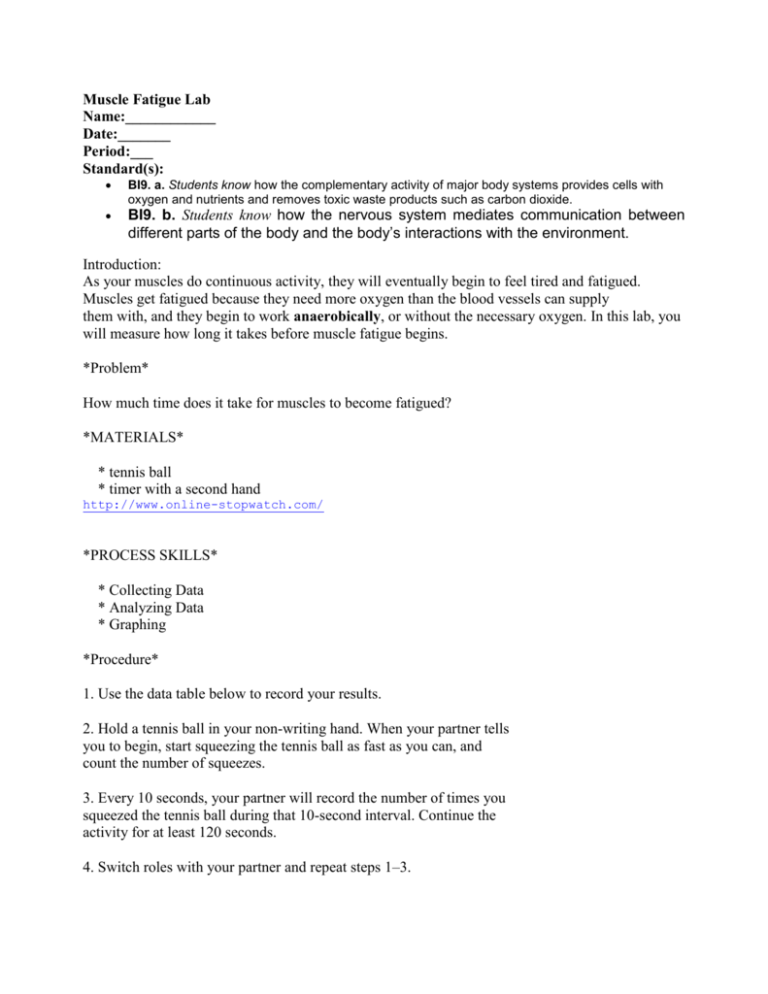
Muscle Fatigue Lab Name:____________ Date:_______ Period:___ Standard(s): BI9. a. Students know how the complementary activity of major body systems provides cells with oxygen and nutrients and removes toxic waste products such as carbon dioxide. BI9. b. Students know how the nervous system mediates communication between different parts of the body and the body’s interactions with the environment. Introduction: As your muscles do continuous activity, they will eventually begin to feel tired and fatigued. Muscles get fatigued because they need more oxygen than the blood vessels can supply them with, and they begin to work anaerobically, or without the necessary oxygen. In this lab, you will measure how long it takes before muscle fatigue begins. *Problem* How much time does it take for muscles to become fatigued? *MATERIALS* * tennis ball * timer with a second hand http://www.online-stopwatch.com/ *PROCESS SKILLS* * Collecting Data * Analyzing Data * Graphing *Procedure* 1. Use the data table below to record your results. 2. Hold a tennis ball in your non-writing hand. When your partner tells you to begin, start squeezing the tennis ball as fast as you can, and count the number of squeezes. 3. Every 10 seconds, your partner will record the number of times you squeezed the tennis ball during that 10-second interval. Continue the activity for at least 120 seconds. 4. Switch roles with your partner and repeat steps 1–3. *TABLE 1. TIME AND NUMBER OF TENNIS BALL SQUEEZES* Time (sec) Number of Squeezes Number of Squeezes (Partner#1) (Partner#2) 0-10 11-20 21-30 31-40 41-50 61-70 71-80 81-90 91-100 101-110 111-120 Analysis Questions: 1. Graph Data-Construct a (line) graph using Microsoft Word or Excel that displays your data and your partner’s data. Make sure to include the following on your graph: title, labeled x axis time (sec.), labeled y axis (number of squeezes), a key/legend, different colors for you data and your partner’s data. 2. How did the number of squeezes change over time? 3. Infer-How long did it take for your forearm muscles to become fatigued? 4. Predict-How might your data be different if you performed the experiment with your writing hand instead of your non-writing hand? 5. Further Thinking-Why is oxygen important for maintaining your muscles’ functions?
